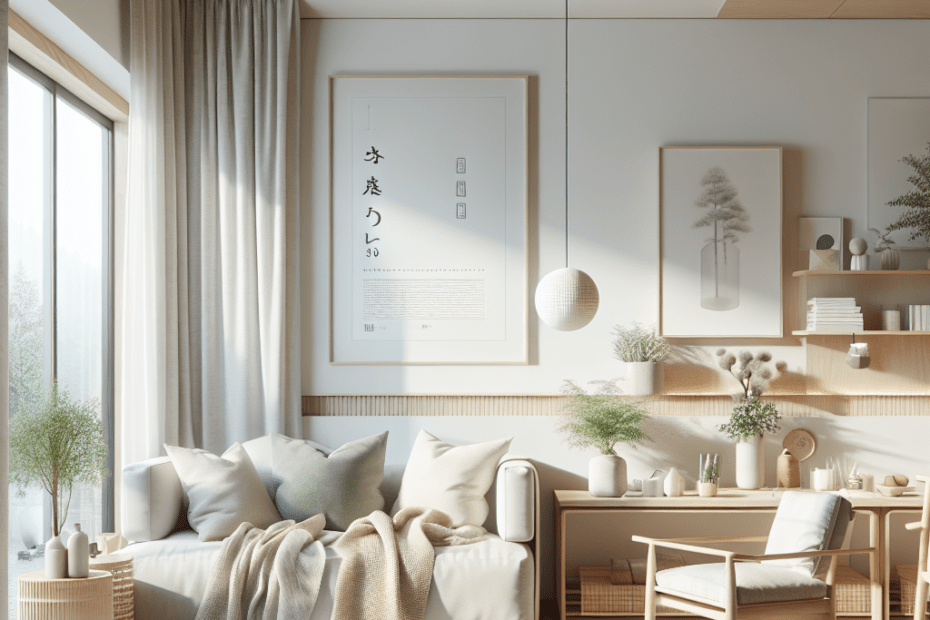“`html
Introduction
In today’s fast-paced world, many individuals seek solace in their homes, and this often leads them to explore various interior design styles. One increasingly popular style is Japandi, a blend of Japanese minimalism and Scandinavian functionality. For those residing in small spaces, Japandi offers a unique design approach that can transform cramped quarters into serene havens. Japandi small space design focuses on simplicity, space efficiency, and tranquility, qualities that resonate with many modern urban dwellers.
Understanding Japandi Minimalism
At the core of Japandi minimalism is the concept of wabi-sabi, a Japanese principle that embraces imperfection and transience, paired with the warm, cozy feel of Scandinavian interiors. The beauty of Japandi lies in its ability to create a harmonious and aesthetically pleasing environment. It utilizes simple furniture, neutral color palettes, and natural materials to maximize functionality without sacrificing style.
Why Choose Japandi for Small Spaces?
Designing small living areas can be challenging. However, Japandi minimalism helps overcome these hurdles by emphasizing the importance of keeping spaces clutter-free. Statistics reveal that the average American home contains over 300,000 items, adding to clutter and stress. Japandi encourages owners to prioritize quality over quantity, creating serene spaces that feel larger and more inviting.
Key Elements of Japandi Design
- Neutral Colors: Japandi spaces typically feature whites, beiges, greys, and muted tones, which help to open up a small space and provide a calm background.
- Functional Furniture: Multi-functional furniture pieces, such as foldaway desks or storage-integrated benches, contribute to Japandi’s efficiency in small spaces.
- Natural Materials: Wood, bamboo, and stone are popular choices, reflecting a connection to nature and adding warmth to interiors.
- Minimalist Decor: Art and decor items are selected carefully to ensure they provide personal value without overwhelming the space.
Steps to Implement Japandi in Your Small Space
- Declutter Your Space: Begin by assessing your belongings. Keep only those items that hold significance or are used regularly.
- Choose a Neutral Palette: Opt for colors that enhance natural light. Light shades make rooms appear more spacious.
- Select Dual-Purpose Furniture: Use pieces that serve more than one function to maximize limited space.
- Incorporate Natural Elements: Bring nature indoors with plants, wooden textures, and natural light.
- Maintain Open Space: Layout your furniture to allow for free movement and avoid blocking natural pathways.
| Benefit | Explanation |
|---|---|
| Serenity | Creates a calming environment that reduces stress |
| Efficiency | Maximizes usability and functionality of each room |
| Space Enhancement | Neutral colors and minimal decor make rooms feel larger |
| Connection to Nature | Natural materials and plants improve mood and air quality |
Key Takeaways
- Japandi combines Japanese simplicity with Scandinavian warmth.
- This style focuses on decluttering and using neutral colors.
- A thoughtful selection of furniture and decor is essential.
- Natural elements play a significant role in this design style.
- Japandi is well-suited for maximizing small living spaces.
Frequently Asked Questions (FAQ)
- What is Japandi design?
Japandi is a design style that merges Japanese minimalism with Scandinavian functionality, focusing on simplicity, natural materials, and a calming aesthetic. - Why is Japandi good for small spaces?
Japandi emphasizes decluttering and functional furniture, which helps to make small spaces feel more open and well-organized. - How can I start incorporating Japandi into my home?
Start by decluttering and choose natural, simple furnishings. Use neutral colors and introduce natural elements like plants. - What colors are used in Japandi design?
Japandi design typically employs neutral colors such as whites, beiges, greys, and muted tones to create a serene atmosphere. - Can Japandi be used in larger spaces?
Yes, while Japandi is excellent for small spaces, its principles of minimalism and natural elements can be applied to any size home.
“`
